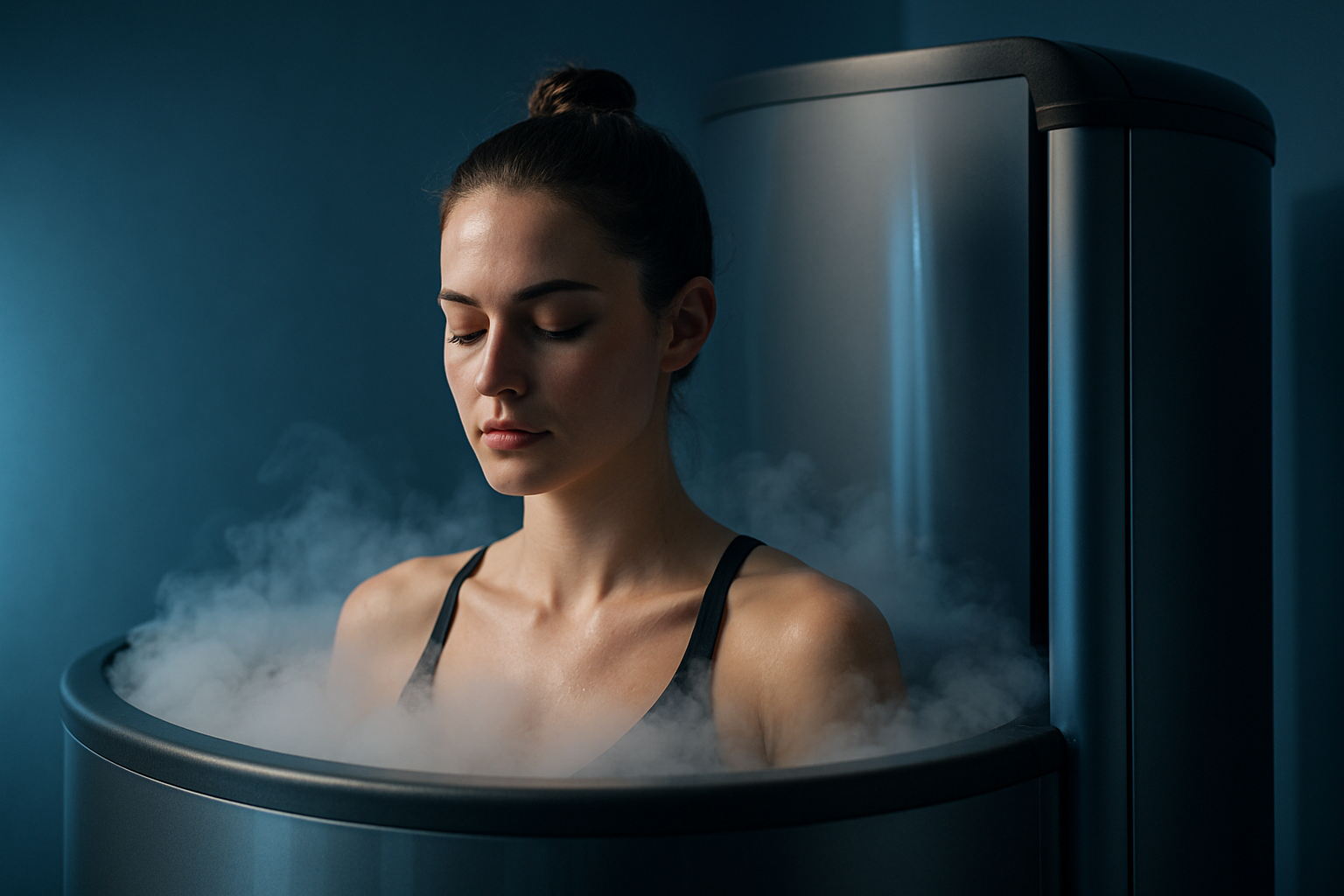Cryotherapy: The Cold Path to Wellness
In the ever-evolving landscape of beauty and fitness, a chilling trend has emerged, captivating the attention of wellness enthusiasts and athletes alike. Cryotherapy, the practice of exposing the body to extremely cold temperatures for therapeutic purposes, has surged in popularity over the past decade. This innovative treatment promises a myriad of benefits, from reducing inflammation to boosting metabolism. As more spas and wellness centers incorporate cryotherapy into their offerings, it's crucial to understand the science behind the chill and its potential impact on our health and beauty routines. Let's dive into the frosty world of cryotherapy and explore how this cutting-edge technique is reshaping our approach to wellness and recovery.

The principle behind cryotherapy is simple: extreme cold exposure triggers the body’s natural healing mechanisms. When subjected to temperatures as low as -166°F (-110°C), the body enters a state of mild hypothermia, redirecting blood flow from the extremities to vital organs. This process is believed to reduce inflammation, boost circulation, and stimulate the release of endorphins and other beneficial hormones.
The Science of the Chill
Understanding the physiological responses to cryotherapy is crucial in appreciating its potential benefits. When exposed to extreme cold, the body’s sympathetic nervous system is activated, triggering a cascade of responses designed to protect vital organs and maintain core body temperature.
One of the primary effects of cryotherapy is vasoconstriction, the narrowing of blood vessels. This process helps to reduce inflammation by limiting blood flow to affected areas. As the body warms up post-treatment, vasodilation occurs, increasing blood flow and potentially accelerating the healing process.
Research has shown that cryotherapy can also influence hormone production. Studies have reported increases in norepinephrine levels, which may contribute to improved mood and pain tolerance. Additionally, some evidence suggests that cryotherapy may boost metabolism by activating brown adipose tissue, a type of fat that burns calories to generate heat.
Cryotherapy in Beauty and Skincare
The beauty industry has embraced cryotherapy with open arms, incorporating cold treatments into various skincare routines and spa services. Cryofacials, for instance, use controlled cold temperatures to tighten pores, reduce puffiness, and promote a more youthful appearance.
The cold-induced vasoconstriction is believed to improve skin tone and texture by constricting blood vessels and reducing the appearance of redness and inflammation. Some proponents claim that cryotherapy can stimulate collagen production, potentially reducing the appearance of fine lines and wrinkles.
Cryotherapy-inspired products have also flooded the market, from ice rollers to cold-stored skincare serums. These products aim to replicate the benefits of professional cryotherapy treatments in at-home skincare routines, offering a more accessible and affordable alternative to spa visits.
Athletic Performance and Recovery
In the world of sports and fitness, cryotherapy has gained a significant following among athletes and fitness enthusiasts. Many professional sports teams and Olympic training centers have incorporated cryotherapy chambers into their recovery protocols.
The potential benefits for athletes are numerous. Cryotherapy is believed to reduce muscle soreness and inflammation, potentially accelerating recovery time between intense workouts or competitions. Some athletes report improved sleep quality and reduced fatigue following cryotherapy sessions, which could contribute to better overall performance.
While anecdotal evidence is abundant, scientific research on cryotherapy’s effects on athletic performance is still emerging. Some studies have shown promising results in terms of reducing muscle damage and improving recovery, but more research is needed to fully understand the long-term impacts and optimal protocols for athletes.
The Cryotherapy Experience
For those considering trying cryotherapy, understanding the typical session is essential. Whole-body cryotherapy usually involves standing in a cryochamber for two to four minutes. Participants wear minimal clothing, often just gloves, socks, and underwear, to maximize skin exposure to the cold air.
The experience is often described as invigorating rather than uncomfortable. Many report feeling a rush of energy and euphoria following a session, likely due to the release of endorphins triggered by the cold exposure.
Local cryotherapy treatments, which target specific areas of the body, are also available. These treatments may use cold air or other cooling methods to focus on particular muscle groups or joints, offering a more targeted approach to pain relief and recovery.
Safety Considerations and Contraindications
While cryotherapy is generally considered safe for most healthy individuals, it’s not without risks. People with certain medical conditions, such as high blood pressure, heart disease, or Raynaud’s syndrome, should consult with a healthcare provider before trying cryotherapy.
Proper safety protocols are crucial in cryotherapy centers. Sessions should always be monitored by trained professionals, and participants should be screened for any contraindications before treatment. It’s also important to follow guidelines regarding session duration and frequency to avoid potential adverse effects.
As cryotherapy continues to gain popularity, regulatory bodies are working to establish standards for equipment and practitioner training. Consumers should seek out reputable facilities that adhere to strict safety protocols and employ certified technicians.
In conclusion, cryotherapy represents an exciting frontier in the beauty and fitness industry. Its potential to enhance recovery, boost skin health, and improve overall well-being has captured the imagination of wellness enthusiasts worldwide. As research continues to evolve, we may gain a deeper understanding of cryotherapy’s long-term effects and optimal applications. For now, those intrigued by the cold path to wellness should approach cryotherapy with an open mind, a healthy dose of caution, and the guidance of qualified professionals. The chill may be temporary, but the potential benefits could be long-lasting.





